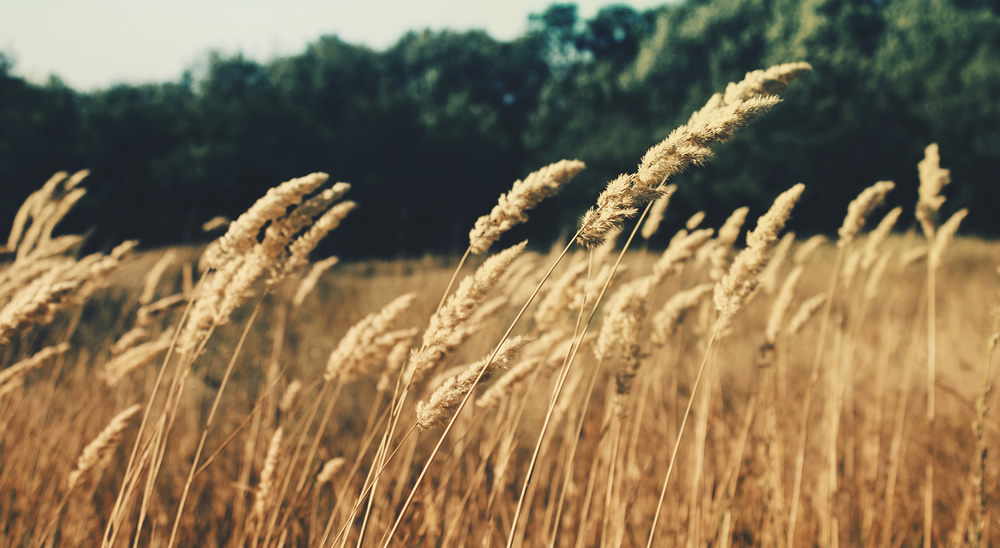Eating ancient grains
Ancient grains are powerhouses of nutrition and can reduce your risk for cancer

Contributed by Nancy Burke, R.D., Danielle Karsies, M.S., R.D., and Melissa Shannon-Hagen, R.D., CSO,
U-M Rogel Cancer Center Symptom Management and Supportive Care Program
For a few years now, the term "ancient grains" has been growing in popularity and you've probably noticed it in the name of many food products in grocery store aisles. Ancient grain refers to a grain that has been planted and harvested, without modification, for hundreds of years or more. These include kamut, amaranth, farro, and teff and they deserve all the attention. They are powerhouses of nutrition, specifically rich in phytochemicals, vitamins, minerals and fiber. These properties are all beneficial in reducing cancer risk, as well as heart disease and diabetes risk and potentially adding longevity to one's life.
But the ancient grains are not the only whole grains that provide these health benefits.
Common, everyday whole grains such as wheat, oats, barley, brown rice and many others provide these benefits as well. In fact, eating 6 oz. of wholegrain foods each day may decrease your colorectal cancer risk by 15-20%.
So how do you know which grains pack the most nutritional benefit?
Grab your glasses and start reading packaging labels. Look for the word "whole," such as 100% whole wheat or 100% whole grain. This ensures the grain contains all three layers of nutrients, not just the endosperm that you find in refined grains. And watch out for empty promises such as “multigrain," "seven-grain" and "bran," as these terms do not mean the product is whole grain.
After tackling label reading, make sure to remember that variety is key in order to get the most benefit from the range of nutrients found in whole grains. Go beyond whole wheat and brown or wild rice and try some other whole grains.
Each of these "ancient" grains pack its own nutrient-dense punch:
Quinoa (KEEN-wah):
While quinoa is technically a seed, it is used as a whole grain. It is a good source of protein and contains magnesium, zinc, folate and iron. It is a quick-cook “grain” with a nutty flavor but it is important to rinse it well prior to cooking to remove the bitter compound that protects the seed from birds and insects. It provides 6 gm protein and 3 gm fiber per ¼ cup dry serving.
Farro:
This ancient grain is popular in Italy and is actually a group of grains that includes spelt, emmer and einkorn. It tastes somewhat like a lighter brown rice with an overall nutty flavor and a lighter undertone of oats. It works well in salads and risottos and has 7 gm protein and 3 gm fiber per ¼ cup dry.
Kamut:
This ancient grain is difficult to overcook, so it is a good one with which to experiment. It has a rich, buttery taste and is easy to digest. Its protein content is high at 7 gm per ¼ cup dry serving and 4 gm fiber.
Amaranth:
This is a complete protein, unlike other grains, and provides iron, magnesium, zinc, calcium and phosphorus. It has a nutty flavor and works well in salads or as a gluten-free flour in cooking. A ¼ cup dry serving provides 6.5 gm protein and 3 gm fiber.
Teff:
Teff, native to Ethiopia, is the new trend in ancient grains. It has a nutty flavor and crunchy texture that works well in baked goods due to its poppy seed size. It provides more calcium than other grains and provides more than 6 gms of protein and 4 gm fiber per ¾ cup.
Barley:
Hulled barley is the true whole grain, but unlike other refined grains, its refined varieties, including pearled or hull-less, still retain a lot of nutrient content, including fiber. For example, hulled barley contains 6 gm of protein versus 3 gm in pearled barley. This grain has been shown to lower cholesterol and combat diabetes and has 6 gm protein per ¼ cup serving (dry).
These are only a few of the many healthy, whole grains that you can work to include in your diet to reap their health benefits. If these don’t interest you, try oats, buckwheat, bulgur, wheat berries, cornmeal, freekeh, whole rye or brown and wild rice instead.
